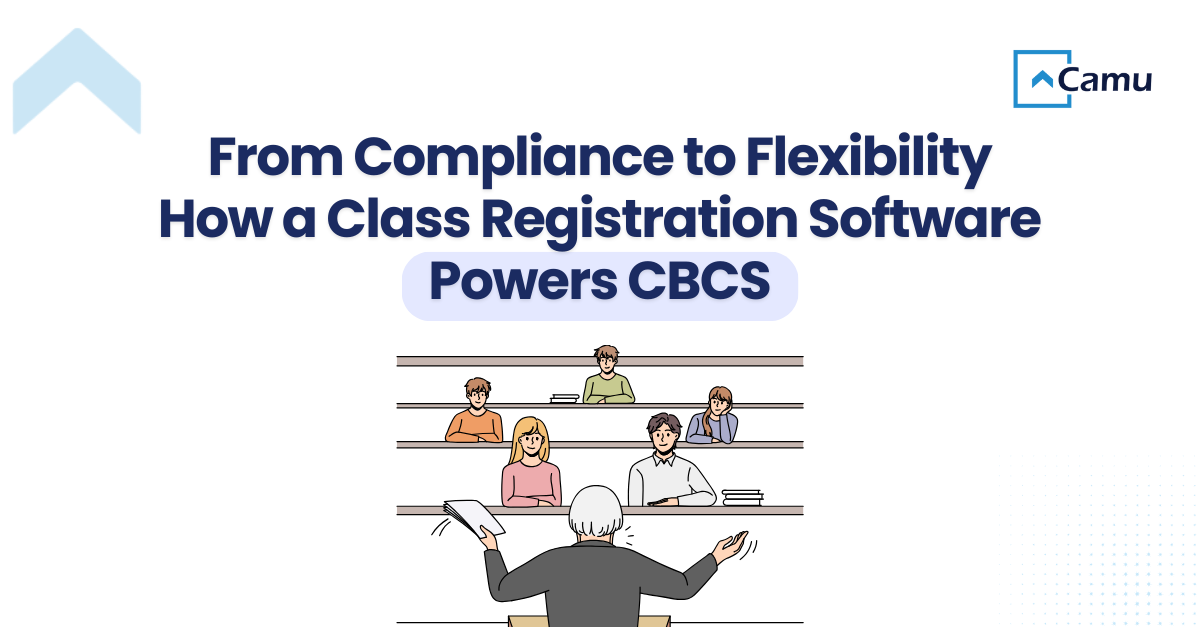Table of Contents
Why Virtual Classroom Rules Matter
How to Set Effective Online Learning Guidelines
Top 10 Virtual Classroom Rules for Students
Camu: Seamless Management for Virtual Learning
Conclusion
Why Virtual Classroom Rules Matter
As more schools across the globe shift to virtual or blended learning models, the dynamics of teaching and learning are rapidly evolving. While the flexibility of online education offers convenience, it also brings new challenges—distractions, reduced focus, and lack of structure.
That’s why setting clear and effective virtual classroom rules is essential. These guidelines help students stay disciplined, create a productive learning environment, and ensure active participation from the comfort of home.
How to Set Effective Online Learning Guidelines
Teachers and parents can collaborate to build a structured and supportive environment for students by implementing the following practices:
1. Create a Pleasant Learning Space
A calm and distraction-free study space helps students concentrate better and engage in meaningful online discussions.
2. Use Structured Lesson Plans
Organized lesson plans keep students informed about daily schedules, assessments, and expectations—reducing uncertainty and promoting better focus.
3. Leverage Classroom Management Tools
Tools like virtual hand-raise, polls, and discussion boards enhance classroom engagement and help maintain order.
4. Maintain Regular Office Hours
Offer individual time slots for students needing extra help. This personal support boosts student morale and encourages active participation.
5. Reinforce Guidelines Consistently
Start each class with a reminder of the virtual classroom rules and expectations. This repetition helps solidify habits and improve overall behavior.
Top 10 Virtual Classroom Rules for Students
To maintain a smooth and engaging virtual learning environment, here are ten must-follow rules for students:
1. Establish a Peaceful Study Environment
Choose a learning space free from distractions—away from phones, TV, family interruptions, or pets. A focused atmosphere promotes effective learning.
2. Dress Appropriately for Class
Just like in a physical classroom, students should dress in clean, respectful attire to foster a serious and respectful learning environment.
3. Arrive On Time and Be Prepared
Join classes a few minutes early to troubleshoot login issues. Have your materials and mindset ready to learn from the start.
4. Turn On Your Camera, Mute Your Mic
Maintain visual presence for better engagement. Mute your microphone when not speaking to reduce background noise and interruptions.
5. Stay Focused on the Lesson
Pay full attention to the class. Avoid multitasking or distractions—social media, mobile games, or unrelated websites are off-limits.
6. Avoid Playing with Gadgets
Only use devices that are essential for learning. Any other gadgets should be put away during class hours.
7. Be Respectful and Considerate
Use features like “raise hand” to speak. Be polite in chats and discussions, and never use offensive language or gestures.
8. Stay Positive and Motivated
Approach virtual learning with creativity and ambition. A good mindset makes the class more enjoyable for everyone.
9. No Eating During Class
Avoid snacks or meals during virtual lessons to maintain discipline and avoid distractions. Water is fine.
10. Complete Your Homework
Always come prepared. Review the syllabus, complete assignments beforehand, and be ready to participate.
Camu: Seamless Management for Virtual Learning
Managing all these elements becomes easier with the right EdTech partner. Camu Digital Campus enables institutions to effortlessly toggle between online and in-person learning with a host of integrated features:
These features not only streamline the virtual learning process but also support effective classroom management.
Conclusion
Virtual classrooms, when managed right, can be just as effective—and even more flexible—than traditional setups. By following clear rules and leveraging tools like Camu, educators and students alike can create a nurturing, productive, and engaging online learning experience.
Ready to level up your virtual learning environment?





